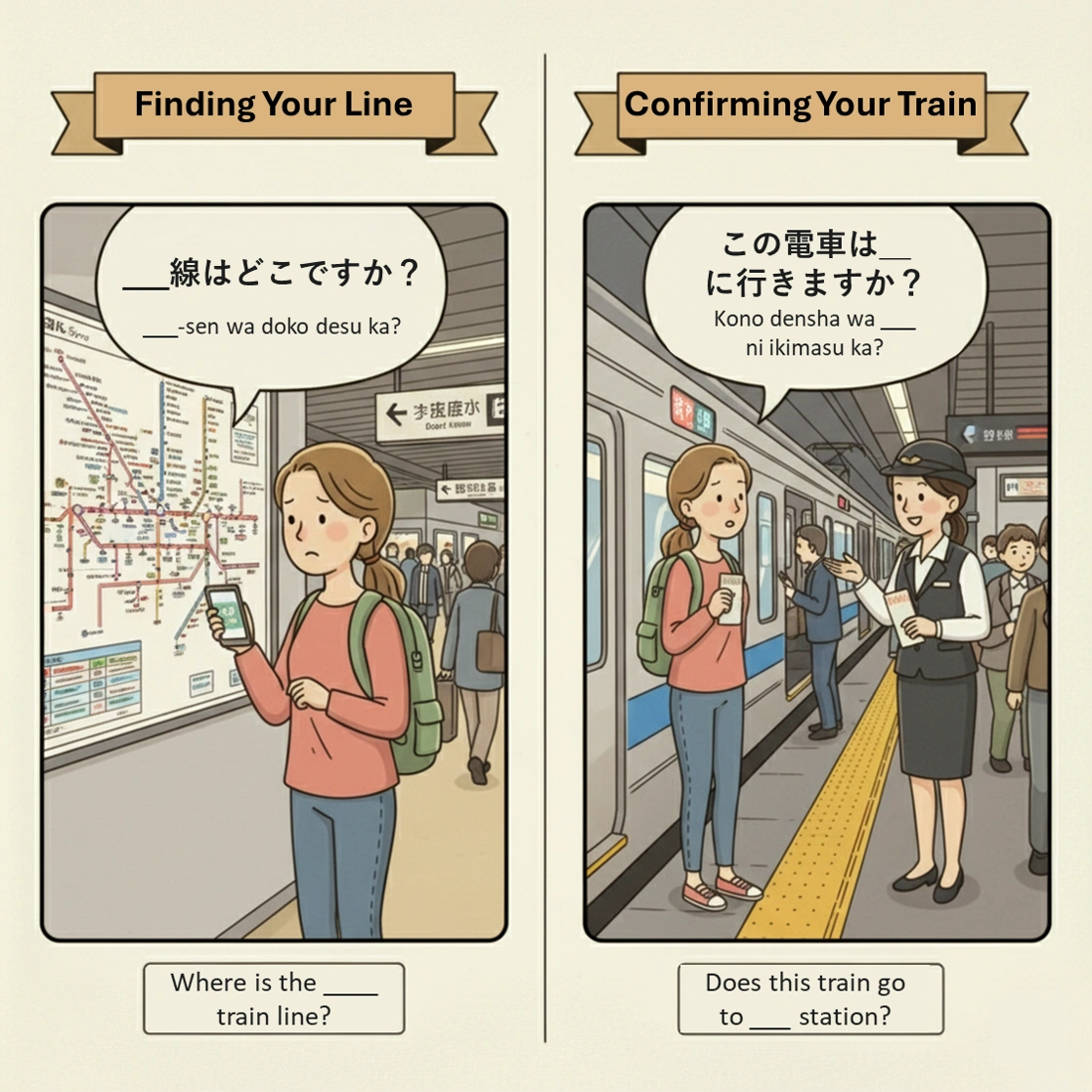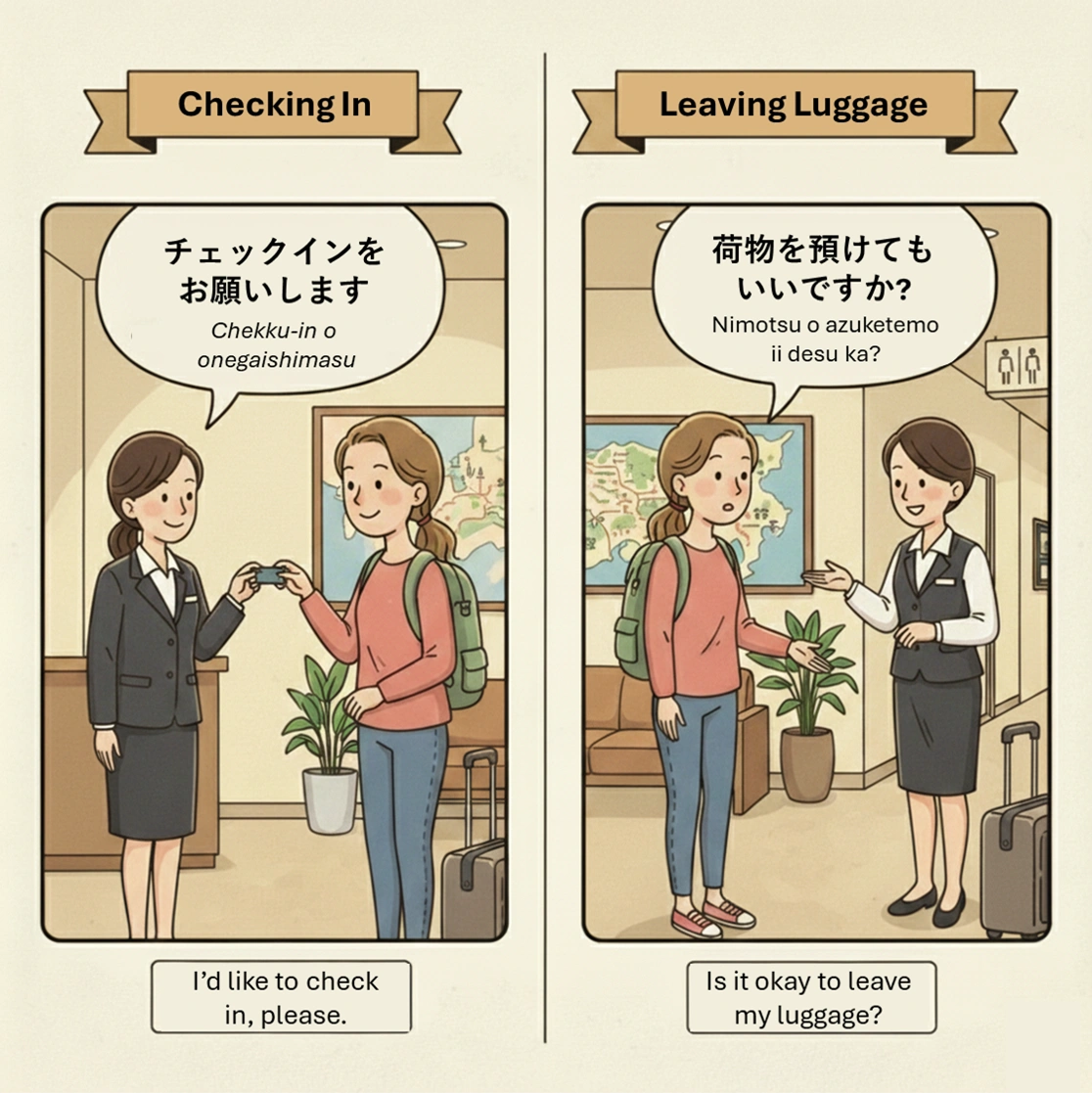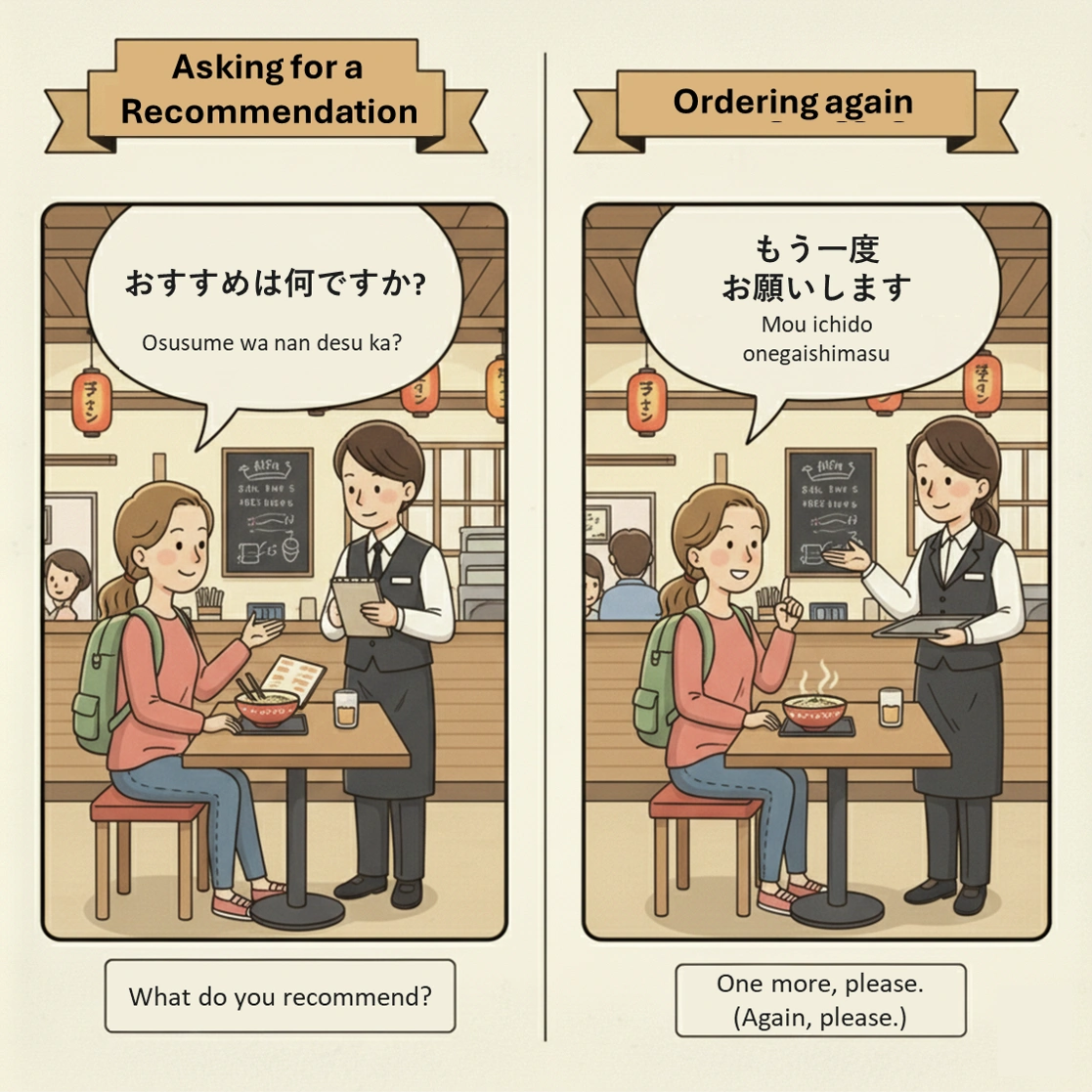The 20 Most Important Japanese Japanese Survival Phrases
Published: November 4, 2025 | Reading Time: 8 minutes
Planning a trip to Japan? You're in for an incredible experience. From the bustling streets of Tokyo to the serene temples of Kyoto, Japan offers a unique blend of modern technology and deep-rooted tradition. While many people in major cities speak some English, learning a few key **Japanese phrases for travel** will transform your trip from a tourist vacation into a genuine cultural experience.
On This Page
1. Why Learn Basic Japanese Phrases?2. The Absolute Basics: Greetings3. Politeness & Courtesy: The Most Important Phrases4. Shopping & Dining5. Navigating & Getting Around6. Helpful Extras & Emergencies7. Beyond Phrases: How to Continue Learning8. Frequently Asked Questions1. Why Learn Basic Japanese Phrases?
Japanese culture places a high value on respect and effort. When you use even simple, broken Japanese, you're signaling that you respect the culture and are making an effort to connect. This small gesture can open doors, bring smiles, and lead to much more positive and memorable interactions.
Many learners have this fear:
"SUMIMASEN is the single most important Japanese word you can learn!"
This list is designed to combat that fear. These 20 phrases are your high-frequency "survival kit." They are practical, easy to remember, and will cover 90% of your basic interactions as a tourist.
2. The Absolute Basics: Greetings
Greetings are the simplest way to show friendliness. A simple "Konnichiwa" when entering a small shop can make a big difference.
- こんにちはKonnichiwaHello / Good afternoon
The classic, all-purpose greeting. Use it from late morning until early evening.
- おはようございますOhayou GozaimasuGood morning
Use this until about 10:30 AM. With friends, you can shorten it to just "Ohayou."
- こんばんはKombanwaGood evening
Use this as your greeting after sunset.
- はい / いいえHai / IieYes / No
Simple and essential. Be aware that "Hai" can also mean "I understand" or "I'm listening."
Mastering Hiragana and Katakana
For absolute beginners, mastering kana (the Japanese alphabets) is the essential first step. Even if you only learn Katakana, you'll be able to read many menu items like ビール (bīru - beer) and コーヒー (kōhī - coffee).
Effective kana learning tools should provide:
- Native audio: Hear correct pronunciation for each character
- Customizable practice: Focus on specific rows you're learning
- Timed challenges: Build speed and automatic recognition
- Progress tracking: Monitor your improvement over time
Our Kana Challenge provides these features with interactive quizzes and real-time pronunciation, helping learners move quickly from romaji to confident kana reading. It's the perfect way to prepare before your trip. (See also our full guide to learning kana).
3. Politeness & Courtesy: The Most Important Phrases
If you learn only one section from this list, make it this one. These phrases are the backbone of polite Japanese society.
- ありがとうございますArigatou GozaimasuThank you (formal)
The most important phrase. Use it for everything. When leaving a restaurant, say it to the staff. When a clerk hands you your change, say it. You can't overuse it.
- すみませんSumimasenExcuse me / Sorry / Thank you
This is the most useful, versatile phrase in Japanese. See the highlight box below for details.
- お願いしますOnegaishimasuPlease (when requesting)
Use this when you ask for something, like after you've pointed at a menu item and said "Kore o kudasai."
- ごめんなさいGomen nasaiI'm sorry
This is a more personal apology than "Sumimasen." Use it if you, for example, spill a drink on someone. For bumping into someone, "Sumimasen" is fine.
The "Magic" Phrase: Sumimasen (すみません)
"Sumimasen" is your all-in-one tool for navigating Japan politely. Use it to:
- Get attention: Say "Sumimasen" to a waiter or shop staff.
- Apologize: Bumped into someone on the train? A quick "Sumimasen" is all you need.
- Show thanks: Someone holds a door for you? "Sumimasen" (in a "sorry for the trouble" sense) is perfectly appropriate, often followed by "Arigatou."
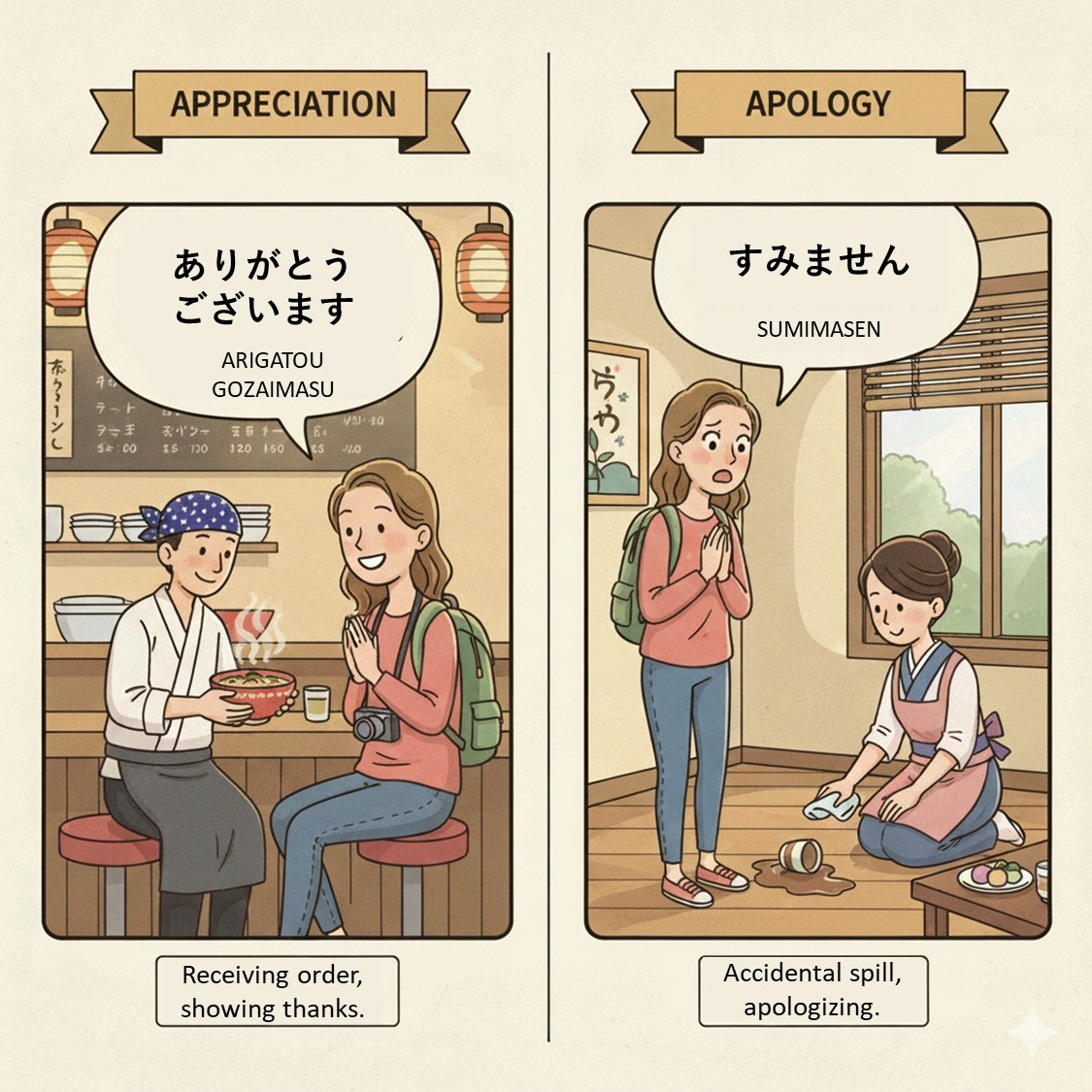
4. Shopping & Dining
These phrases will help you eat and shop with confidence. Remember, pointing is perfectly acceptable, especially when combined with these phrases!
- これをくださいKore o kudasaiThis one, please
The ultimate ordering phrase. Just point at what you want (on the menu or in the shop) and say "Kore o kudasai."
- いくらですか?Ikura desu ka?How much is it?
Useful in markets or shops without clear price tags. Most staff will show you the price on a calculator.
- お会計をお願いしますO-kaikei o onegaishimasuThe check, please
In many restaurants (izakaya), you'll need to ask for the check. You can also make an "X" gesture with your index fingers, which is a common, non-verbal way to ask.
- おいしいですOishii desuIt's delicious
Saying this to the chef or staff as you leave is a huge compliment and always brings a smile.
- ごちそうさまでしたGochisousama deshitaThank you for the meal
A very polite phrase to say as you are leaving a restaurant. It's a set phrase that expresses gratitude for the food and effort.
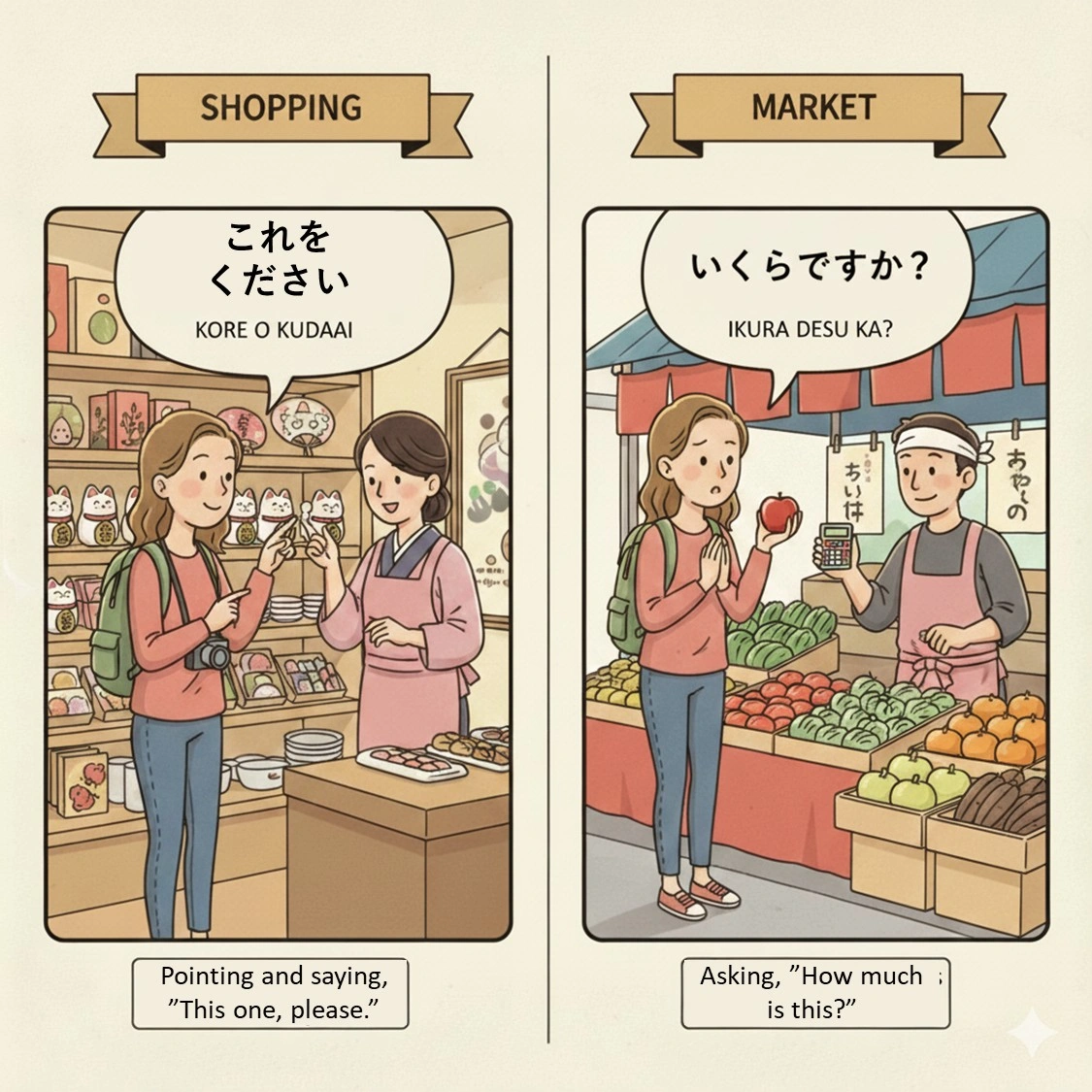
6. Helpful Extras & Emergencies
These phrases fill in the gaps and help you manage when you don't understand.
- わかりませんWakarimasenI don't understand
Essential for when someone is speaking to you in rapid-fire Japanese.
- 英語を話せますか?Eigo o hanasemasu ka?Do you speak English?
Polite to ask this before launching into English. A more casual version is "Eigo, daijoubu?" (Is English OK?).
- もう一度お願いしますMou ichido onegaishimasuOne more time, please
Useful when you *almost* understood but need them to repeat it, perhaps more slowly.
- 大丈夫ですDaijoubu desuIt's okay / I'm fine / No, thank you
Another versatile phrase. If a clerk asks if you need a bag (fukuro), you can say "Daijoubu desu" to decline.
7. Beyond Phrases: How to Continue Learning
Memorizing a list of phrases is a fantastic start, but it's just the first step. The real magic happens when you start to understand the *context* behind the words. This is where immersive reading comes in.
Once you've mastered the phrases, the next stage is to start consuming native content. This helps you move from "reciting" to "understanding" and is key to building your vocabulary naturally.
Practical Tools for Daily Immersion
Modern reading tools now provide the support needed to bridge the gap from beginner to intermediate:
- Fresh Content: Access to daily articles keeps learning from getting stale.
- Instant Lookups: One-tap dictionaries remove the frustration of stopping to look up a word.
- Audio Support: Listening while reading reinforces pronunciation and new vocabulary.
For example, YoMoo offers these features along with TTS audio for every article, making it easier to start your immersive reading journey, even when you're busy.
Key Takeaway
You don't need to be fluent to have a respectful and engaging trip to Japan. Learning these 20 phrases shows effort and respect, which will be returned to you tenfold by the people you meet. Focus on "Sumimasen" and "Arigatou Gozaimasu," and you'll be off to a great start!
Explore the "Essential Phrases" Series
Mastering everyday situations is key to a smooth trip. Continue building your confidence with our other guides in this series:
